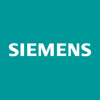In today's highly competitive and volatile markets, manufacturers face the challenge of producing increasing product variations in ever-shorter cycles while maintaining the highest quality standards. The solution isn't found in expensive, time-consuming manual changeovers—it lies in intelligently linking Information Technology (IT) and Operational Technology (OT) to drive digital transformation.
By bridging the gap between the shop floor and the enterprise, IT/OT integration makes production more flexible, efficient, and sustainable. It replaces error-prone, manual processes with real-time data capture from sensors, controllers, and legacy systems, enabling streamlined workflows and rapid, data-based decision making. This digital connection creates complete end-to-end transparency across the production chain, allowing manufacturers to react faster and smarter to shifting customer demands and market requirements.
Furthermore, the strategic convergence of IT and OT creates the essential foundation for digital transformation, enabling enterprise-wide data accessibility and powering advanced applications like AI/ML, digital twins, and the Metaverse. This seamless integration transforms raw operational data into actionable intelligence, driving scalable digitalization across the value chain while enabling real-time decision making, new business models, and continuous innovation.
At the very heart of this transformation is a robust data integration solution that harmonizes and contextualizes diverse data from OT-level sources. Common architectures can utilize SIMATIC S7 PLCs as header controllers, WinCC SCADA systems, and Industrial Edge devices to securely manage and transmit data to critical enterprise systems like MES, MOM, and ERP.
The result is seamless northbound and southbound communication, which empowers manufacturers with consistent, real-time insights for:
- Enhanced operational transparency and immediate visibility of production performance
- Proactive identification and elimination of bottlenecks or inefficiencies
- Streamlined digital order execution that replaces outdated, paper-based methods
- Optimized decision-making that reduces cycle times, operational costs, and environmental impact
In certain applications, hybrid systems may be required, incorporating enterprise message brokers (MQTT-broker) that act as central data hubs. These brokers collect and standardize information from controllers, SCADA systems, Industrial Edge devices, and other systems into specific formats based on Unified Namespace guidelines, enabling seamless consumption by various IT systems (cloud, MES, ERP) while maintaining structured data flow throughout the organization.
Therefore, the effective IT/OT Data integration solution requires a tailored, phased approach:
- Concept Phase: Clearly define objectives—such as increased transparency, flexibility, and sustainability—based on market demands and production needs.
- Specification Phase: Establish the necessary data, required architectures, cybersecurity measures, and standard connectivity protocols to ensure interoperability.
- Implementation Phase: Deploy scalable solutions tailored to your environment, from point-to-point connections in brownfield sites to sophisticated, orchestrated data integration solution using modern platforms.
Integration means collaboration, and this is key for digital transformation success. Successfully integrating IT and OT demands close cooperation between production owners, system integrators, machine builders, and technology partners. With our Industrial Operations X portfolio available on Siemens Xcelerator digital business platform, Siemens delivers standardized, open-standard solutions that are secure, scalable, and designed to adapt as data-driven production needs evolve.
By embracing IT/OT integration with a powerful data integration layer, manufacturers unlock the full potential of their production data, enabling smarter decisions, enhanced product quality, and sustained growth. This digital transformation not only shapes a future of faster, more economical, and smarter manufacturing but also turns production data into a strategic asset for competitive advantage in today's dynamic market, paving the way for sustainable innovation in an increasingly digital world





